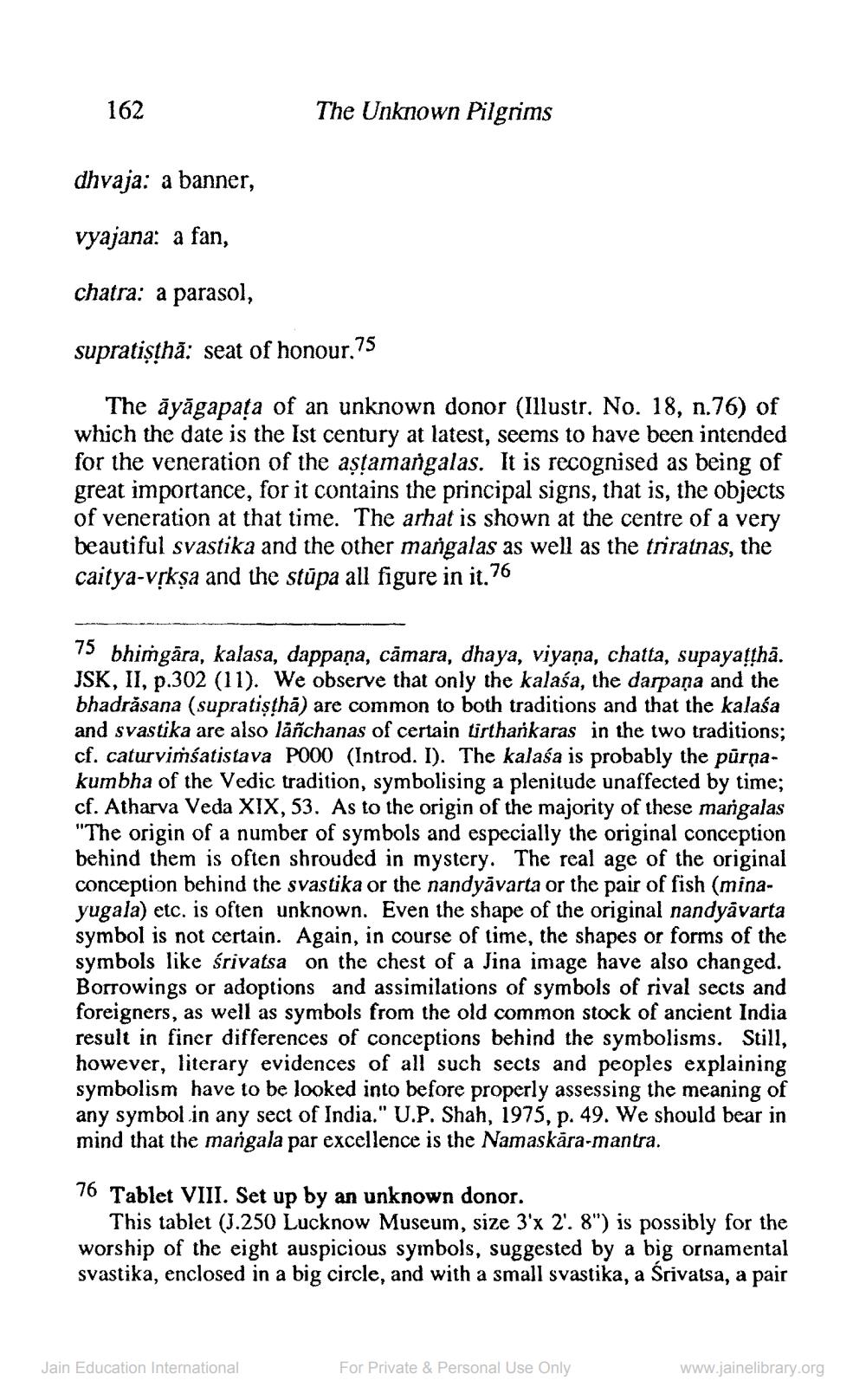________________
162
The Unknown Pilgrims
dhvaja: a banner,
vyajana: a fan,
chatra: a parasol,
supratisthā: seat of honour.75
The āyāgapata of an unknown donor (Illustr. No. 18, n.76) of which the date is the Ist century at latest, seems to have been intended for the veneration of the aştamangalas. It is recognised as being of great importance, for it contains the principal signs, that is, the objects of veneration at that time. The arhat is shown at the centre of a very beautiful svastika and the other mangalas as well as the triratnas, the caitya-vskșa and the stūpa all figure in it.76
75 bhimgära, kalasa, dappaņa, câmara, dhaya, viyaņa, chatta, supayatthā. JSK, II, p.302 (11). We observe that only the kalaśa, the darpana and the bhadrasana (supratisthā) are common to both traditions and that the kalasa and svastika are also lañchanas of certain tirthankaras in the two traditions; cf. caturvimśatistava POOO (Introd. I). The kalaśa is probably the pūrņakumbha of the Vedic tradition, symbolising a plenitude unaffected by tim cf. Atharva Veda XIX, 53. As to the origin of the majority of these mangalas "The origin of a number of symbols and especially the original conception behind them is often shrouded in mystery. The real age of the original conception behind the svastika or the nandyāvarta or the pair of fish (minayugala) etc. is often unknown. Even the shape of the original nandyavarta symbol is not certain. Again, in course of time, the shapes or forms of the symbols like srivatsa on the chest of a Jina image have also changed. Borrowings or adoptions and assimilations of symbols of rival sects and foreigners, as well as symbols from the old common stock of ancient India result in finer differences of conceptions behind the symbolisms. Still, however, literary evidences of all such sects and peoples explaining symbolism have to be looked into before properly assessing the meaning of any symbol in any sect of India." U.P. Shah, 1975, p. 49. We should bear in mind that the mangala par excellence is the Namaskara-mantra.
76 Tablet VIII. Set up by an unknown donor.
This tablet (J.250 Lucknow Museum, size 3'x 2'. 8") is possibly for the worship of the eight auspicious symbols, suggested by a big ornamental svastika, enclosed in a big circle, and with a small svastika, a Srivatsa, a pair
Jain Education International
For Private & Personal Use Only
www.jainelibrary.org




